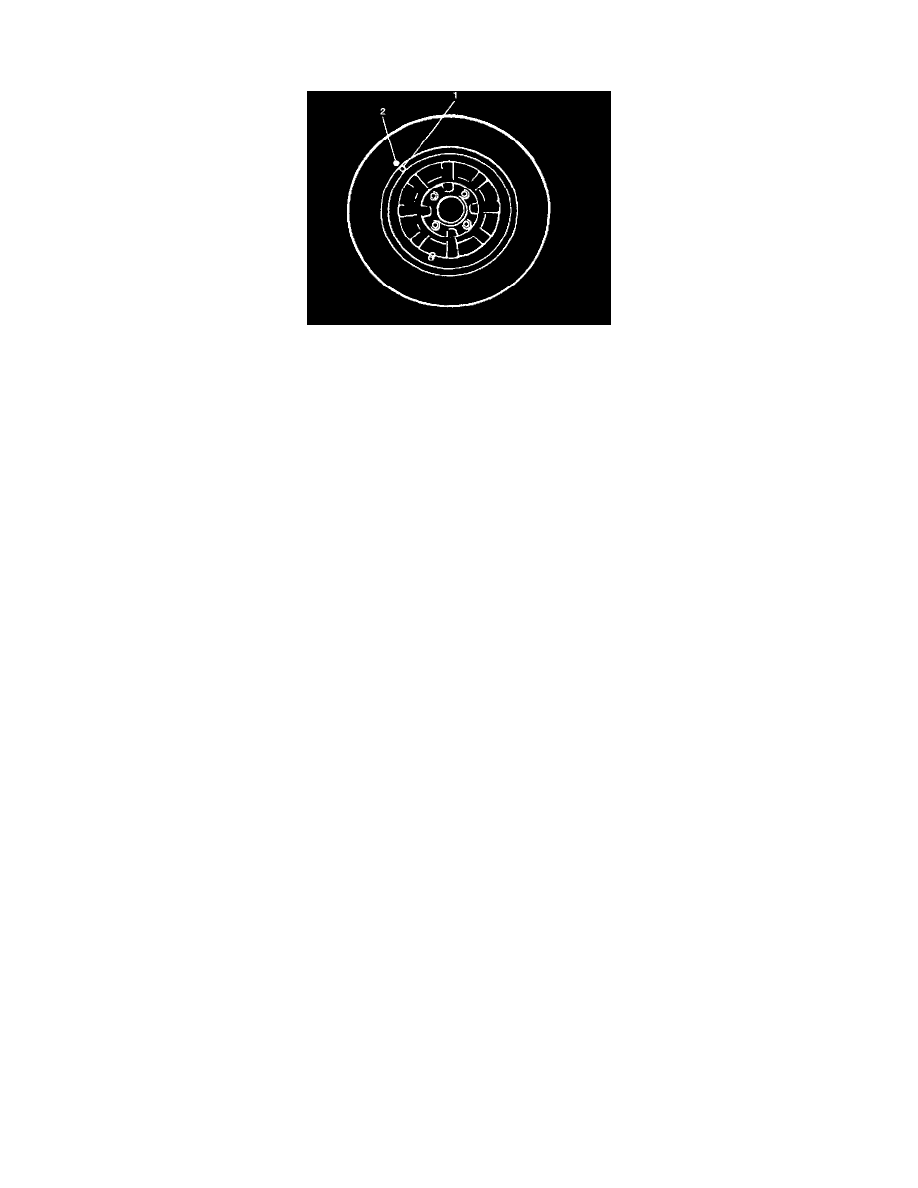XL-7 Standard 4WD V6-2.7L (2002)

Tires: Adjustments
Matched Tires and Wheels Description (for Vehicle Equipped with Steel Wheels)
Tires and wheels are match mounted at the assembly plant. This means that the radially stiffest part of the tire, or "high spot", is matched to the
smallest radius or "low spot" of the wheel.
This is done to provide the smoothest possible ride.
The "high spot" of the tire is originally marked by paint dot on the outboard sidewall. This paint dot will eventually wash off the tire.
The "low spot" of the wheel is originally marked by paint dot on the wheel rim-flange. Properly assembled, the wheel rims' paint dot (1) should be
aligned with the tires' paint dot (2) as shown in the figure.
Whenever a tire is dismounted from its wheel, it should be remounted so that the tire and wheel are matched. If the tire's paint dot (2) cannot be
located, a line should be scribed on the tire and wheel before dismounting to assure that it is remounted in the same position.
Inflation of Tires Description
The pressure recommended for any model is carefully calculated to give a satisfactory ride, stability, steering, tread wear, tire life and resistance to
bruises.
Tire pressure, with tires cold, (after vehicle has set for 3 hours or more, or driven less than one mile) should be checked monthly or before any
extended trip. Set to the specifications on the tire placard located on the side of instrument panel.
It is normal for tire pressure increase when the tires become hot during driving. Do not bleed or reduce tire pressure after driving. Bleeding reduces
the "Cold Inflation Pressure."
NOTE: Valve caps should be kept on valves to keep dust and water out.
Higher than Recommended Pressure Can Cause:
^
Hard ride
^
Tire bruising or carcass damage
^
Rapid tread wear at center of tire
Unequal Pressure on Same Axle Can Cause:
^
Uneven braking
^
Steering lead
^
Reduced handling
^
Swerve on acceleration
Lower than Recommended Pressure Can Cause:
^
Tire squeal on turns
^
Hard steering
^
Rapid and uneven wear on the edges of the tread
^
Tire rim bruises and rupture
^
Tire cord breakage
^
High tire temperatures
^
Reduced handling
^
High fuel consumption
Tire Placard Description
The tire placard is located on the driver's side door lock pillar. The placard lists the maximum load, tire size and cold tire pressure where applicable.
Tire Rotation
